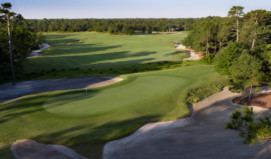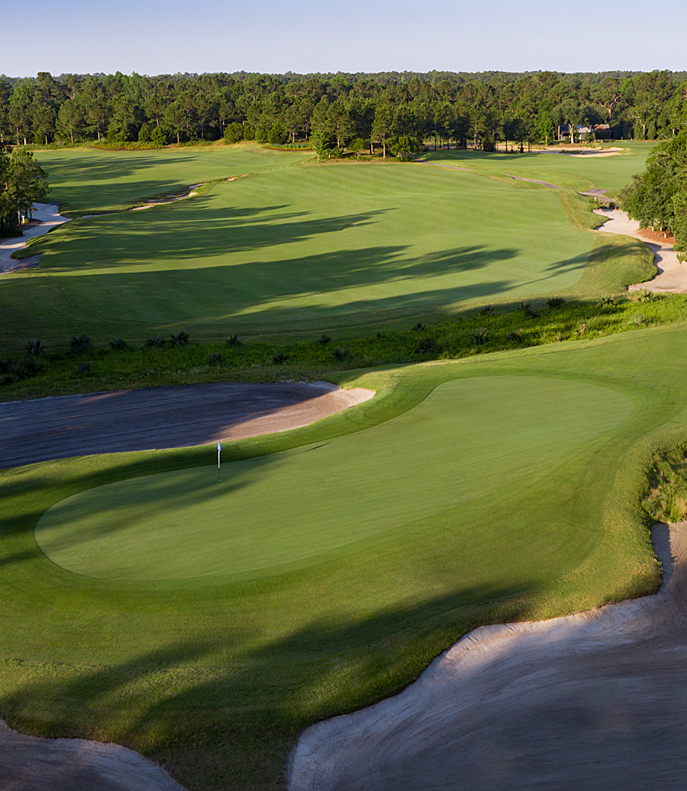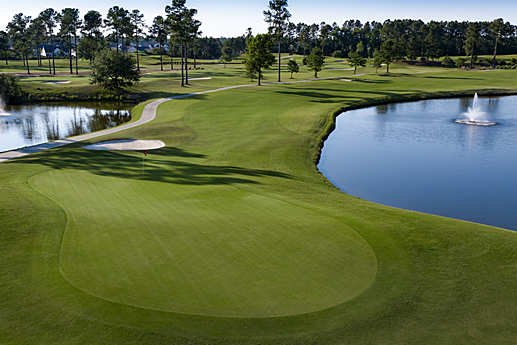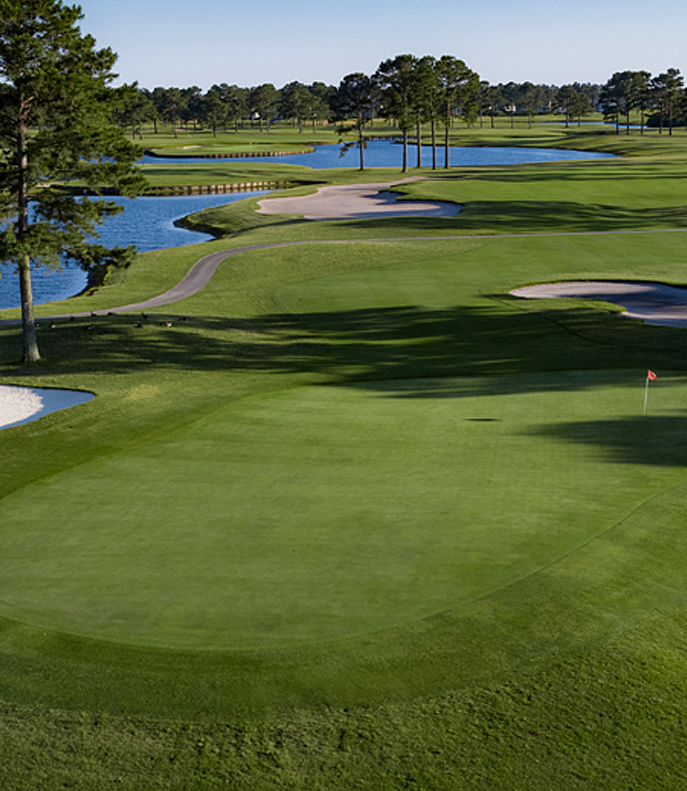Designed by legendary architect Mike Strantz, True Blue Golf Club is one of the area’s most audacious designs, featuring gargantuan fairways, rambling waste bunkers and 19 greens (no, that’s not a typo! No. 6 has two greens).
While its sister course, Caledonia, attracts more attention, many locals will tell you True Blue is at least its equal.
Whether you are preparing for a round at True Blue or just dreaming of one, here are five things you need to know about a layout Golfweek ranks among America’s top 100 resort courses.
1. True Blue is by reputation a “big” golf course, and that’s an accurate perception, but your round could be defined by your ability to finesse a short iron into a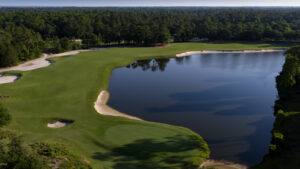 devilish greens complex. Holes like No. 2, a short par 4 featuring a green that isn’t much wider than Kate Moss in the 90s, and No. 4 (pictured right), a button hook par 5, reward the ability to feather a wedge more so than raw power (if you can reach No. 4 in two, good for you, but I’m talking to the normies here). Sure, a course as wide and long as True Blue offers many benefits to long hitters, but there is much more to scoring than the ability to bludgeon the driver.
devilish greens complex. Holes like No. 2, a short par 4 featuring a green that isn’t much wider than Kate Moss in the 90s, and No. 4 (pictured right), a button hook par 5, reward the ability to feather a wedge more so than raw power (if you can reach No. 4 in two, good for you, but I’m talking to the normies here). Sure, a course as wide and long as True Blue offers many benefits to long hitters, but there is much more to scoring than the ability to bludgeon the driver.
2. Don’t let the scorecard intimidate you. True Blue opens with a 499-yard (all yardages from white tees) par 5 that is the No. 1 handicap. That’s bunk. The fairway might be the course’s widest, providing plenty of leeway on the opening tee shot. Play this as a three-shot hole and a short approach to the middle of the green will wait.
3. Save your best for last because the closing trio of holes are True Blue’s toughest. The par-3 16th, which requires a long carry over water, and holes 17 and 18 (top photo), both par 4s, are among the round’s most dangerous. The 18th is menaced by water running the entire left side of the hole, and it has decided more than a few matches, so don’t lose focus late in the day.
4. Strantz was an iconoclast, and it shows throughout the round at True Blue, perhaps most of all on the par-3 No. 7. The seventh is listed as the easiest hole on the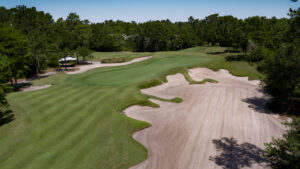 front nine, but a three-tiered, peanut shaped green is 50 yards long and features approximately 15 feet of elevation change from top to bottom. That’s a long way of saying No. 7 can be everything from a benign 120-yard hole begging you to make birdie to a 160-yard monster that will have you pleading for mercy. The range of the challenge on No. 7 (pictured right) is enormous and reflective of Strantz’s genius.
front nine, but a three-tiered, peanut shaped green is 50 yards long and features approximately 15 feet of elevation change from top to bottom. That’s a long way of saying No. 7 can be everything from a benign 120-yard hole begging you to make birdie to a 160-yard monster that will have you pleading for mercy. The range of the challenge on No. 7 (pictured right) is enormous and reflective of Strantz’s genius.
5. Speaking of No. 7, True Blue’s five par-3s might be the layout’s most memorable collection. The third hole is 141 yards, nearly all of it a carry over water, the 11th is a potential birdie hole at 130 yards, while the 14th, which plays from an elevated tee box to a green that stretches nearly 60 yards, might be the most memorable of all. Buckle up on the aforementioned No. 16. True Blue’s one-shotters are unforgettable.
One trip around True Blue is all it takes for players to understand why the layout is so highly regarded.

